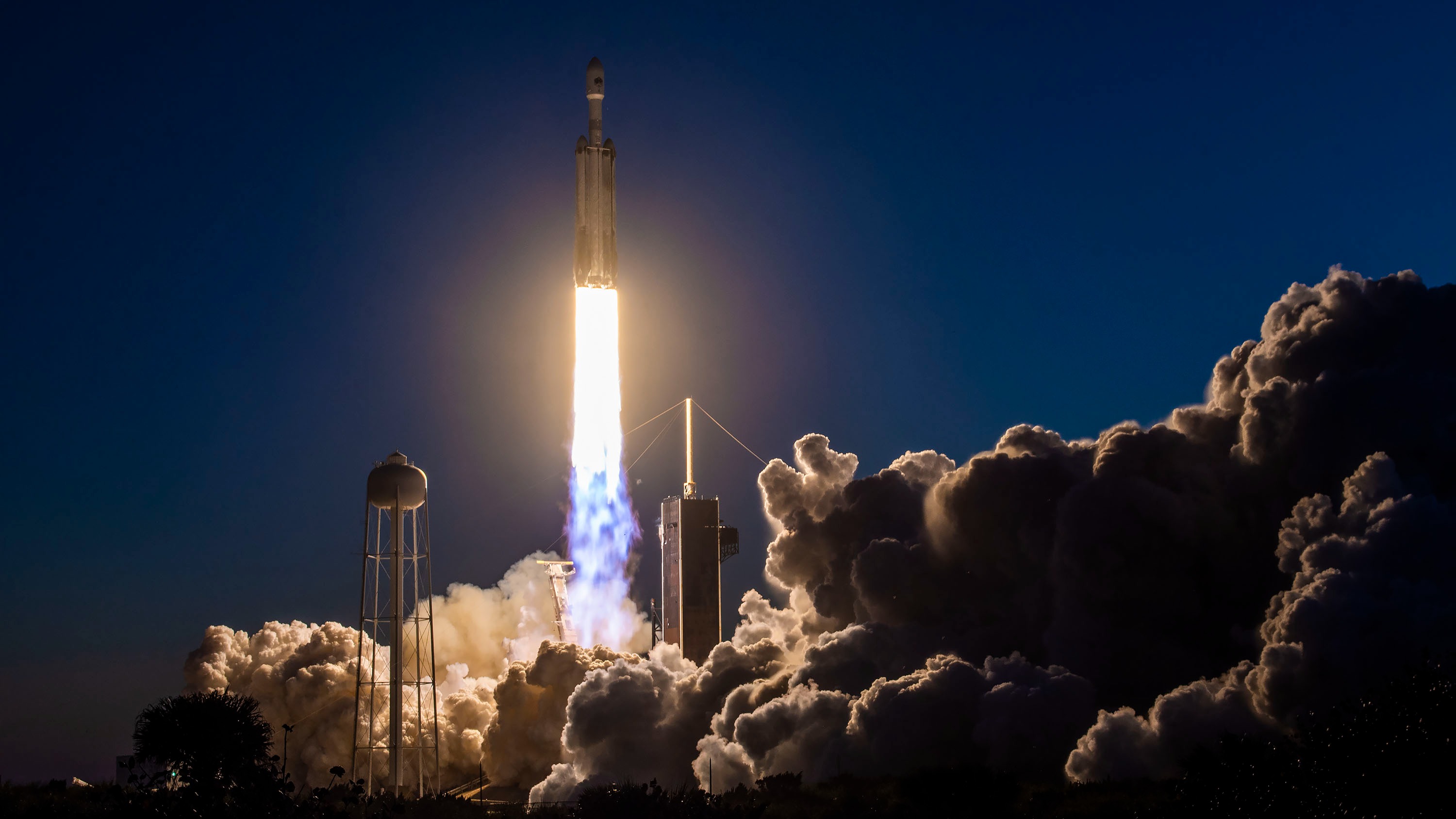SpaceX Falcon Heavy will launch private mission to moon's south pole in 2026
Astrobotic has booked a ride on the powerful SpaceX launcher.

A private company has booked another ride to the moon aboard a SpaceX Falcon Heavy rocket.
A SpaceX Falcon Heavy will launch Astrobotic's third robotic lunar landing mission in 2026, the Pittsburgh-based company announced on Tuesday (April 25). The mission will touch down at the moon's south pole, which is an area of great interest due to its perceived stores of water ice. NASA plans to land its crewed Artemis 3 mission there in 2025 or so, for example, and build one or more outposts in the area over time.
"The NASA Artemis program is a major effort to establish a U.S. presence at the lunar south pole, and at the same time, international customers are also lining up plans to pioneer new science, exploration and commercial activities within this region as well," Astrobotic CEO John Thornton said in a statement. "Hundreds of kilograms" will fly on board the new mission, he added.
Related: Possible Artemis 3 moon landing site spied by NASA spacecraft (photos)
Astrobotic hasn't reached the moon yet, but it may do so as soon as this year. Its Peregrine lunar lander is ready for launch aboard United Launch Alliance's (ULA) new Vulcan Centaur rocket.
Peregrine will send 11 NASA payloads to a region near the Gruithuisen Domes, which hosts bizarre terrain geologists want to see up close, and payloads from five other countries besides. Peregrine was supposed to fly this spring, but a dramatic fireball erupted during testing of the Vulcan Centaur's upper stage recently, and the ongoing investigation will delay the new rocket's debut launch until at least June or July, ULA has said.
The second Astrobotic mission will use a larger lander, known as Griffin, that will also launch atop a Falcon Heavy. Griffin will deliver NASA's water-hunting Volatiles Investigating Polar Exploration Rover (VIPER) to the lunar south pole in 2024 or so.
Get the Space.com Newsletter
Breaking space news, the latest updates on rocket launches, skywatching events and more!
Both NASA deliveries on Peregrine and Griffin were funded under the agency's Commercial Lunar Payload Services (CLPS) program, which aims to help small companies reach the moon to support Artemis.
Related: NASA's Artemis program: Everything you need to know
Specifics on the third mission to the moon were not available in Astrobotic's press release, but the company noted it plans "to carry lunar surface payloads, as well as offer satellite deployments for those looking to deploy to other destinations in cislunar space."
Examples of payloads Astrobotic cited include "science instruments, technology demonstrators, rovers, power systems and other infrastructure."
Astrobotic was founded in 2007 and has raised at least $215 million in funding to date, according to Crunchbase Statistics. Its most recent round wrapped up in late 2022.
Elizabeth Howell is the co-author of "Why Am I Taller?" (ECW Press, 2022; with Canadian astronaut Dave Williams), a book about space medicine. Follow her on Twitter @howellspace. Follow us on Twitter @Spacedotcom or Facebook.
Join our Space Forums to keep talking space on the latest missions, night sky and more! And if you have a news tip, correction or comment, let us know at: community@space.com.

Elizabeth Howell (she/her), Ph.D., was a staff writer in the spaceflight channel between 2022 and 2024 specializing in Canadian space news. She was contributing writer for Space.com for 10 years from 2012 to 2024. Elizabeth's reporting includes multiple exclusives with the White House, leading world coverage about a lost-and-found space tomato on the International Space Station, witnessing five human spaceflight launches on two continents, flying parabolic, working inside a spacesuit, and participating in a simulated Mars mission. Her latest book, "Why Am I Taller?" (ECW Press, 2022) is co-written with astronaut Dave Williams.
